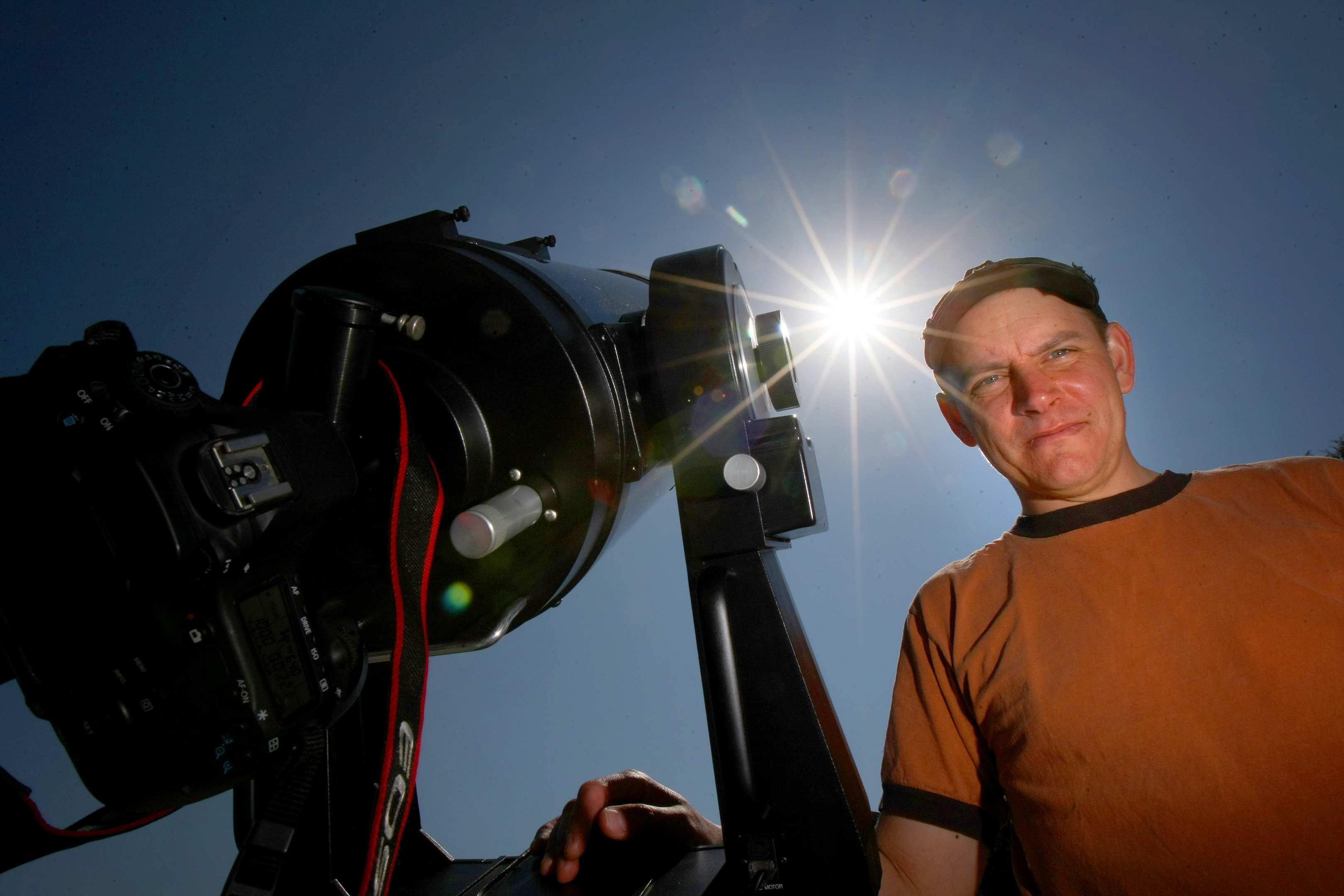Mercury, the solar systems smallest planet, traversed across the face of the sun on Monday in a rare celestial event.
Astronomers and enthusiasts alike gathered on the roof of St Andrews University observatory tower to witness the transit of the tiny planet, appearing as if almost a blip across the projection of the sun through many of the telescopes.
The transit event occurs sporadically, depending on the orbit of Mercury and our relative position in the solar system.
The planet becomes visible on telescopes and modified projectors because it blocks out the light from the sun as it moves between the sun and Earth.
The last time we were able to witness the transit in Scotland was in May 2003, and the next time will be in November 2019. After that, those hoping to catch a glimpse of the little planet will have to wait until 2032.
The sunny, clear skies enjoyed across Tayside and Fife on Monday meant that St Andrews was one of the best places to witness the eclipse, with Dr Joe Llama calling the conditions “ideal”.
“If the weather was bad, like it was in 2004 for the transit of Venus, then we would not have been able to see a thing,” he said.
“When we are looking at the transit of Mercury across the face of the sun, we use solar filters, which block out 99.99% of the suns light.
“We put the filters on the top of our telescopes, and then use recording equipment- like a digital camera- to track the transit.
“The transit of Mercury across the sun was predicted pretty much to the minute, and the events can be plotted centuries in advance.”
Dr Llama is an astrophysicist at St Andrews University, and has travelled over from the Lowell Telescope in Arizona to look for “exo-planets”, celestial bodies that exist out with our solar system.
The techniques used by astronomers tracking the transit of Mercury are similar to the ones used to discover planets 10-100 million light years away. To put this into perspective, one light-year is approximately 5.8 trillion miles.
Aleks Sholz, Observatory Director at St Andrews University, said that the James Gregory telescope in the town was one in a series of observatories world-wide that was being used to detect Exo-planets.
He hailed the earth based observatories for their ever increasing ability to detect planets great distances away.
A telescope- like the James Gregory telescope in St Andrews- that is focused on a star will register a drop in brightness if a planet is traversing across its face.
Astrophysicists can then plot the size and distance of the planet that would be completely invisible to the naked eye.
The astronomer also noted that viewers of any celestial event involving the sun should never look directly at it, either with a telescope or their naked eyes.










